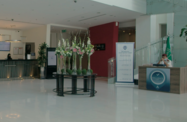The Kingdom is targeting both foreign and local holidaymakers as the government and private segment seek to increase visitor numbers and expand revenue streams in an increasingly busy tourism sector.
The industry is becoming more important to the economy, with visitor numbers, revenue generated and job creation all on the rise. A recent study by the World Travel and Tourism Council (WTTC) showed that the contribution of the sector to Saudi Arabia’s GDP this year should total $30.3bn, well up on the $17.6bn earned in 2010. By 2021, this contribution is expected to increase to $41bn, representing 6.2% of GDP.
Just as importantly as building national wealth is tourism’s potential to create employment opportunities, vital for a country where some 38% of citizens are under the age of 15. Tourism is widely seen as being able to provide jobs in coming years, with thousands of new positions to be added to the 600,000 that the WTTC estimates currently exist in the industry.
The Saudi Commission for Tourism and Antiquities (SCTA), the agency responsible for shaping tourism policy and overseeing the industry’s growth, is even more optimistic for the sector’s future.
Addressing a meeting of the SCTA board in late March, Prince Sultan bin Salman bin Abdulaziz Al Saud, the commission’s president, said that tourism would account for around 2.23m jobs in 10 years’ time, with revenue set to reach $58bn by 2020. In part, this growth would be driven by an estimated $16.5bn worth of investment to be channeled into the sector by both the public and private sectors, he said.
Since 2008 SCTA has organised an annual convention to showcase the tourism opportunities in the Kingdom. The Saudi Tourism and Travel Investment Market (STTIM), which was held at the end of March at the Riyadh International Convention and Exhibition Centre, is billed as an event to increase awareness of the tourism services available to stimulate the sector.
According to Prince Sultan bin Salman, “During the event there will be good investment opportunities to make business partnerships between local and visiting foreign companies in order to support and develop infrastructures of the Saudi tourism sector.”
Though the SCTA estimates for revenue and job creation are up on those issued by the WTTC, the latter’s forecasts were compiled before the government unveiled a new round of investment and development projects, and prior to King Abdullah bin Abdulaziz Al Saud, Custodian of the Two Holy Mosques, announcing further economic and social welfare packages aimed at stimulating growth and domestic spending.
According to the minister of labour, Adel Fakieh, the tourism sector has the potential to be one of the best sources of new jobs in the economy, and to greatly increase its share of GDP. To achieve this, the Labour Ministry has been working closely with other agencies, including the SCTA, the Human Resources Development Fund and the General Establishment for Technical and Vocational Training to coordinate training programmes, identify the needs of the industry and assist in expanding the sector.
“Employment of Saudis is one of the declared objectives of the development of the Kingdom’s tourism sector,” Fakieh said on March 27 while attending the STTIM.
One of the roles the ministry and associated agencies will have to work on is encouraging young Saudis to take up a career in tourism. Currently, just under three-quarters of all positions in the industry are held by expatriates, so if tourism is to achieve its declared objectives, that development path must lead to locals wanting to be employed in the sector.
Prince Sultan bin Salman is confident that this will be the case, predicting that 45% of those working in the sector by 2021 will be locals. If so, this would mean some 1.1m Saudis will have a job in the tourism trade, making it one of the largest sources of employment in the Kingdom.
To help achieve this, the public and private sectors need to work together more closely to better develop the industry, according to a report issued by the Centre for Studies and Research at the Asharqia Chamber, a facilitator for the business community in the Eastern Province, in early March.
Among the recommendations of the report were that greater support be given to small and medium-sized enterprises to assist them in developing tourism products and services, and that the industry establish a broader product range to attract more local and overseas tourists. The study cited marine, heritage and desert tourism, as well as the conference trade as presenting growth opportunities, suggesting that utilising resources such as wildlife reserves, cultural and historical sites and the coastal strip would boost investment and visitor numbers.
Should the chamber’s recommendations be adopted, more locals could holiday at home, reversing a long-standing trend. Industry studies show that more than 4.5m Saudis went abroad for their summer holidays in 2010, almost half going to other Arab states, and spending a combined $33bn. By offering locals some of the same options that its regional neighbours provide for tourists, Saudi Arabia could see more of its citizens opt to spend more time, and money, at home. This would spur further growth within the tourism industry and generate yet more jobs.

